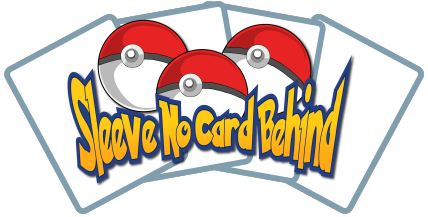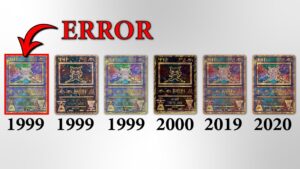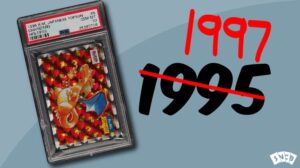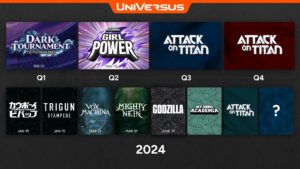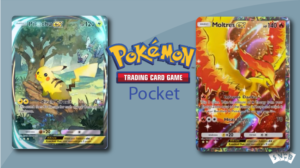Which Pokémon Cards Increase in Value? (and how to predict them)
-
Oliver Copeland
- Last Updated: February 6, 2024
Imagine having a time machine, knowing which 1999 Pokémon cards are going to explode in value. We would all go back and gather as many shadowless Chairzards as possible! But even today, in the modern era, it would be beneficial to know which Pokémon cards will increase in value.
There are some aspects of the market that will be virtually impossible to predict, but there are also many tells when a card is going to go up in price. In this article, I’m going to dive into a little bit of market analysis, and explain how (and why) I believe that investing in certain Pokémon cards can be very lucrative.
The most low-risk investment is Charizard. Charizard cards always have and always will increase in value over time. Other cards will increase in value if the demand is greater than the supply.
Why do Pokémon Cards Increase in Value?
So first we need to look at why cards increase in value. Why is a shadowless 1st edition Charizard worth six figures?
Two reasons:
- There are very few 1st edition Charizards (supply)
- Charizard is cool as hell (demand)
Allow me to elaborate. The reason Pokémon cards increase in value is simply supply and demand.
The original 1st edition print of Base Set from 1999 wasn’t met with the hype that everyone expected. In fact, it kind of bombed. So WotC went back to the drawing board, gave the cards an aesthetic refresh, and re-released them, this time with better reception. The new cards sold like hotcakes, and the Pokémon TCG took off. But what about those not-so-popular cards that sold before the refresh? These are now known as “shadowless” cards- referring to the lack of a drop shadow on the right side of the illustration box. So you can see where this is going, right? The poor sales of these 1st edition shadowless cards resulted in a very low supply.
Out of the 16 holofoil cards included in the 1999 Base Set, Charizard was easily the most popular. His character design resembles a dragon, for Pete’s sake! The chase was on, as kids (and adults) everywhere scrambled for the Charizard. Even to this day, Charizard remains upon the throne as the most sought-after Pokémon overall.
So there you have it. The sheer demand for Base Set Charizard is through the roof, and the 1st edition copies are in very low supply. This is what created the six-figure Pokémon card we all know today, and this is why Pokémon cards increase in value.
Now, this was an extreme example. Other Base Set holofoil cards have also increased over time, due to the same fundamentals, but on a smaller scale. Blastoise and Venusaur have also exploded in value, and the other holofoils have as well, but again, to a lesser degree. We can apply this to any card, and determine whether or not we should invest.
Why Did Pokémon Card Popularity Explode In 2020?
There are many reasons why Pokémon cards are so pricey. Recently we saw a huge peak in the popularity of the hobby, and this drove prices up, but basic supply and demand is typically the root cause of expensive products.
There was a sort of “perfect storm” in 2020, resulting in Pokémania 2020. COVID was a big part of it, driving thousands of people to dig up their old collections, then receive stimulus cheques with nothing else to spend them on. And right before all this happened, Logan Paul made a huge scene over on YouTube, practically reviving Pokémania overnight. Demand was at an all-time high, and before you knew it, supply chain issues drastically reduced the supply of cards.
Which Pokémon Cards to Invest in
When I determine which cards to invest in, I typically take a low-risk approach. In this hobby, low-risk usually means Charizard and other popular Pokémon like Pikachu, Mewtwo, and generation one starters.
Vintage cards are also low-risk and increasing in value, thanks to a dwindling supply. This applies two-fold to vintage sealed products. Vintage sealed starter decks, booster packs, and other products are always a good investment because they will increase in value.
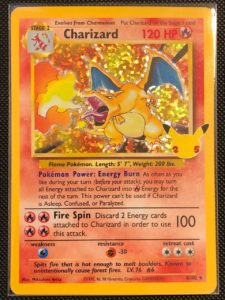
Investing in modern cards is a bit trickier. We’re in an age now where the common collector is aware of investing for the long term. One reason vintage products are worth so much is that collectors back then didn’t yet know the potential of Pokémon.
Let’s take the recent Celebrations set for example. Celebrations is a special set released by The Pokémon Company to commemorate the 25th anniversary of the Pokémon franchise. The set contains 50 cards, all of which are holofoil, and also includes a reprint of Charizard, Blastoise, and Venusaur, from Base Set.
Investing in this looks like a good idea, right?
Right. The only issue is that everyone also had the same good idea. Also, this set is in high supply, as it saw multiple print runs. For sealed Celebrations product to be a good investment, you’d have to wait out everyone else until they’ve sold off their product.
How to Predict Which Pokémon Cards Will Be Worth Money
Again, I’m going to circle back to supply and demand. It’s just that important when predicting rising card prices.
So ultimately, we’re looking for cards that will likely increase in demand but have a low or decreasing supply. Some promotional cards fit into this category. For example, Umbreon SWSH129. This was a promo card that came with Evolving Skies blister packs for a short period of time (low supply). Umbreon is a huge fan-favorite Pokémon, and many Umbreon collectors will eventually seek this card (high demand). The blister pack was purchased at MSRP, so the promo card was basically a free bonus, and the value of the Umbreon promo has been very slowly creeping up in price.
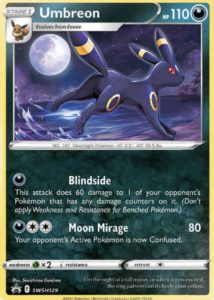
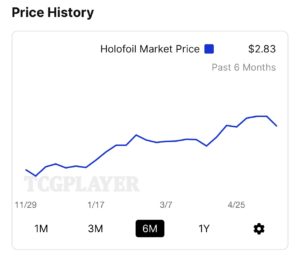
Don’t go purchasing a Snom, hoping it will go up in value. This would be considered a high-risk investment, as Snom isn’t in demand, and never has been. Will some future event result in Snom becoming the ultimate chase card? Maybe, but probably not.
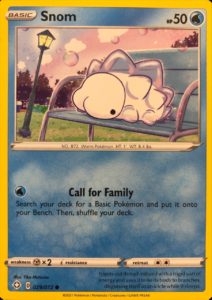
Can You Make Money Investing in Pokémon Cards?
Of course, you can make money. We see it every day on eBay and the local second-hand market. However, most of these people are selling off their childhood collections, and they had the unique opportunity to basically get the cards for free (thank you, Mom and Dad).
Purchasing vintage collections today is expensive, and definitely not entry-level. People want to know if they can build a side hustle flipping Pokémon cards without a large initial investment.
Well, there is no cut-and-dry answer. It really depends on what you are able to leverage. For example, if you have access to products at low prices or have a friend in the distribution business, you can probably make a profit, due to the low cost. Or perhaps you already own a business where you see Pokémon cards often pass through, such as a second-hand store or pawn shop.
If you want to make money by carefully selecting cards and purchasing them in order to resell them years down the road, yes it’s possible to make money. But it tackles an inhuman amount of patience.
Getting Started
If you are into this hobby, and I mean opening packs and trading cards, start by purchasing some booster packs and keeping them sealed. If you want to invest, you’ll have to get used to seeing sealed product that you are not allowed to open.
Watch eBay and your local second-hand markets. This is where you’ll find huge savings. While most Pokémon card investing is long-term, scooping up an old collection at a low price can accelerate that process or even grant you an immediate return.
One last trick is to watch for promo cards in products on the shelves. Like my Umbreon example earlier, these cards can sometimes blow up in value in just a couple of years. If you can keep the blister pack or collection box sealed, even better. Good luck with your Pokémon card investing.

Hi, I'm the founder of Sleeve No Card Behind. I hope you enjoyed your read and learned something. Learn more about me on the About page.
